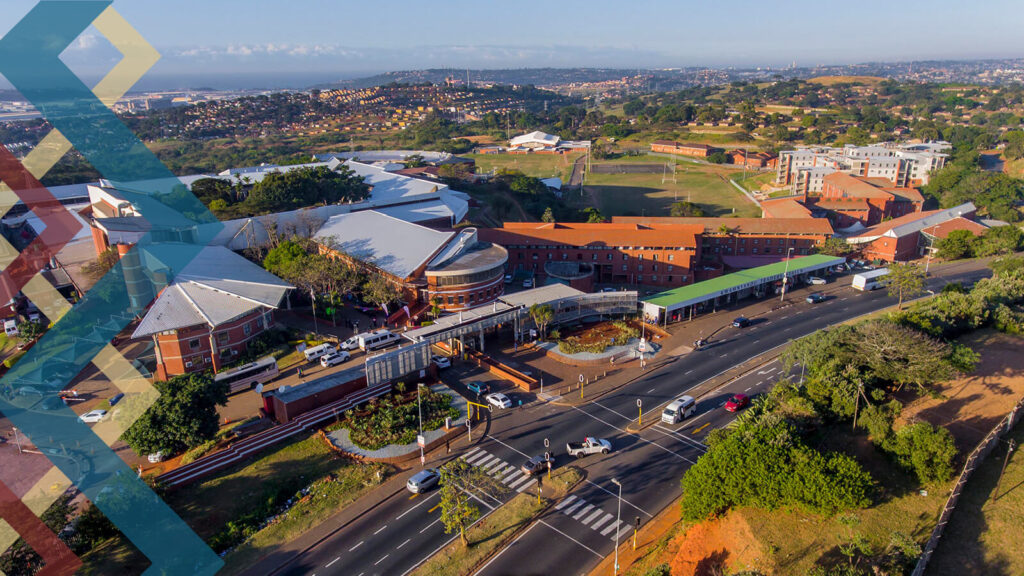
In 1974 the Chief Minister of KwaZulu, Dr Mangosuthu Buthelezi, began discussing the idea of a dedicated tertiary educational institution specialising in technical subjects for black students, to meet the urgent and growing demand for expertise in these subjects.
Anglo American and De Beers Consolidated Mines pledged R5 million to start building the initial facility, and later they were joined by Mobil Oil, AECI, the S.A. Sugar Millers’ Association, the Rembrandt and Distillers Corporation, LTA Limited, Sasol and other sponsors, who pledged more funds to establish the Schools for Chemical Engineering, Mechanical Engineering, Electrical Engineering, Civil Engineering and Building, and Business and Secretarial Studies.
By mid-1977 the project could go ahead. The KwaZulu Cabinet decided to site the Technikon in Umlazi which, while part of KwaZulu, is also part of the Durban Metropolitan area. Given the urgency of the demand for technicians, and the need to build up the institution in an orderly fashion, it was decided to open its doors as soon as possible. Hence preliminary but permanent buildings were designed and built, and teaching began in 1979. The Technikon moved into its main buildings on their completion in September 1981.
In November 2007, Mangosuthu Technikon was renamed Mangosuthu University of Technology (MUT).
To offer technological, career-directed educational programmes focusing on innovative problem-solving research and engage with government / business / industry and communities as end-users.
To be a transforming, equitable, sustainable and academically excellent University of Technology anchored in its communities.
The vision is an expression of a commitment to:

We encourage an environment of dialogue and discovery that fosters integrity, excellence, inclusiveness, respect, collaboration, and innovation. MUT’s core values reflect how we have pursued our plan as well as how we will fulfil our mission and realise our vision. Each value reflects rich, shared meaning on how we go about shaping and owning the future.
We act with professionalism and uphold the highest ethical standards. We are committed to transparency and accountability. Our decisions ensure responsible stewardship of the University’s resources, reputation, and values. We lead by example in all areas including our approaches to sustainability.
We adhere to a standard of core values and ensure that our actions meet expectations and are carried out in a fair and ethical fashion.
We respect our colleagues and work together for shared success. We treat others with civility and openness, recognising the dignity inherent in each individual.
We are committed to delivering consistently high-quality service, teaching, and research through superior performance. We strive for excellence, seeking to apply the highest standards to benefit our communities.
These values define what MUT stands for and what we bring to work. We undertake to uphold them regardless of whether or not they are rewarded and even if at some point they become a competitive disadvantage.


This plan is pragmatic. Firstly, it realises that our University is already home to several areas of excellence in education, research, and community engagement that need further consolidation and strengthening as the cornerstones for a young and developing research-informed University of Technology.
Secondly, it recognises that MUT is operating in a financially constrained context and environment and does not seek to commit MUT to a radical change of its business model not matched by its capacity, capabilities, and resources.
Thirdly, the plan presents specific strategic initiatives to take MUT to higher levels of academic excellence and relevance to its communities and stakeholders. Finally, it recognises the need to expand the available human and capital resources necessary to meet these vital challenges.
This plan is aligned to national policy priorities outlined in the Higher Education Act (1997), the White Paper for Post-School Education and Training (2013), the Policy Framework on Differentiation in the South African Post-School system developed by the DHET, and the aspirations of the National Development Plan.
Specifically, the plan deepens MUT’s commitment to quality undergraduate career-focused programmes and impactful research in niche areas and strengthens MUT’s differentiated contribution to the National Development Plan’s vision of a knowledge-intensive economy and the advancement of socio-economic development of its communities.

Currently the fourth-largest township in South Africa, Umlazi got its name, according to legend, from a time when Shaka passed through the area. He apparently refused to drink from the local stream, saying the water tasted like ‘umlaze’ – the acid taste from fermented milk.
Originally known as the Umlazi Mission Reserve and owned by the Anglican Church, it was earmarked by the government in 1940 as a relocation point for Cato Manor residents. This was contentious and was one of the causes of the Cato Manor riots of 1959. In 1967 Umlazi was declared a township, divided into 26 sections named for letters of the alphabet. It is the only township in South Africa with its own vehicle registration number: NUZ.
